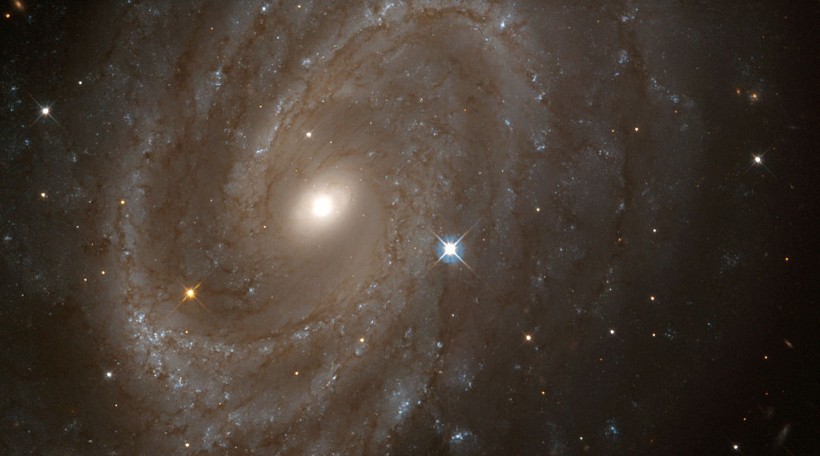Currently, current cosmological models predict that eventually, the universe will cease to exist and die a cold death. But, other experts wonder if, instead of dying, the universe collapses and reinflates like a cosmic lung; over and over through the ages.
Big Bounce Hypothesis: Origins and Life of the Universe

A Nasa Hubble Space Telescope Shows The Spiral Galaxy Ngc 4603, The Most Distant Galaxy In Which A Special Class Of Pulsating Stars Called Cepheid Variables Have Been Found. It Is Associated With The Centaurus Cluster, One Of The Most Massive Assemblages Of Galaxies In The Nearby Universe. The Universe Is A Youthful 12 Billion Years Old -- Not 20 Billion, As Astronomers Once Believed -- And That Is Old Enough To Support The Theory That The Big Bang Started It All, Scientists Said Tuesday
Although not as widely accepted as other theories, some cosmologists believe that the Universe is part of a long series of births, deaths, and rebirths, one without a beginning nor an end. Instead of a Big Bang, experts believe in the Big Bounce hypothesis.
Today, physicists have shown the latest version of the Big Bounce hypothesis, solving significant problems raised in previous iterations, although it still has major limitations.
In a press release, Will Kinney, a physicist from the University of Buffalo, says that people proposed bouncing universes to make the known Universe infinite well into the past. However, the team shows in the recent study that one of the newest types of Bouncing universe models does not work.
He adds that in the new model, which addresses entropy problems raised in previous models, even if the Universe cycles, it has to have a point of origin, a beginning.
Currently, the most widely accepted models for the Universe show how it emerged from the point of origin known as a singularity roughly 13.8 billion years ago when it began to expand out of a dense bit of time and space. Unfortunately, the models that support the Big Bang have little to say regarding what the singularity would look like, reports ScienceAlert.
As an alternative, the Big Bounce hypothesis could sidestep the issue of a singularity by removing it from the equation entirely. A collapsing universe would instead rebound before it reached a model-breaking moment.
ALSO READ: NASA James Webb Space Telescope's Confusing 'Schrodinger's Galaxy Candidate' Baffles Scientists
Flaws of the Big Bounce Model Revealed
Kinney, together with Nina Stein, a physicist also from the University of Buffalo, conducted various calculations and found that a cyclic universe would not be able to stretch endlessly back into the past.
In the study published in the Journal of Cosmology and Astroparticle Physics, titled "Cyclic cosmology and geodesic completeness," experts demonstrated that by solving the entropy problem, a situation is created where the universe has to have a starting point. The team's proof shows that, generally, a beginning is necessary for any cyclic model that removes entropy by expansion.
Although, the recent findings do not mean that the cyclic Universe model is in dead water. The team notes that their computations do not apply to the cyclic model of physicist Roger Penrose called conformal cyclic cosmology. According to this model, each cycle expands infinitely with no period of contraction.
For now, the Big Bounce hypothesis will need more studies and stability to remain a viable model of the universe. Stein explains that the idea that there was a period before which there was no time bothers the duo. Adding that, they wanted to know what came before. But as far as the two can come up with, there must have been a beginning for the universe. A point for which there is no answer yet.
RELATED ARTICLE: Super-Earth Ross 508b Orbiting in the Habitable Zone of a Red Dwarf Might Possess Some Signs of Life
Check out more news and information on Space in Science Times.














